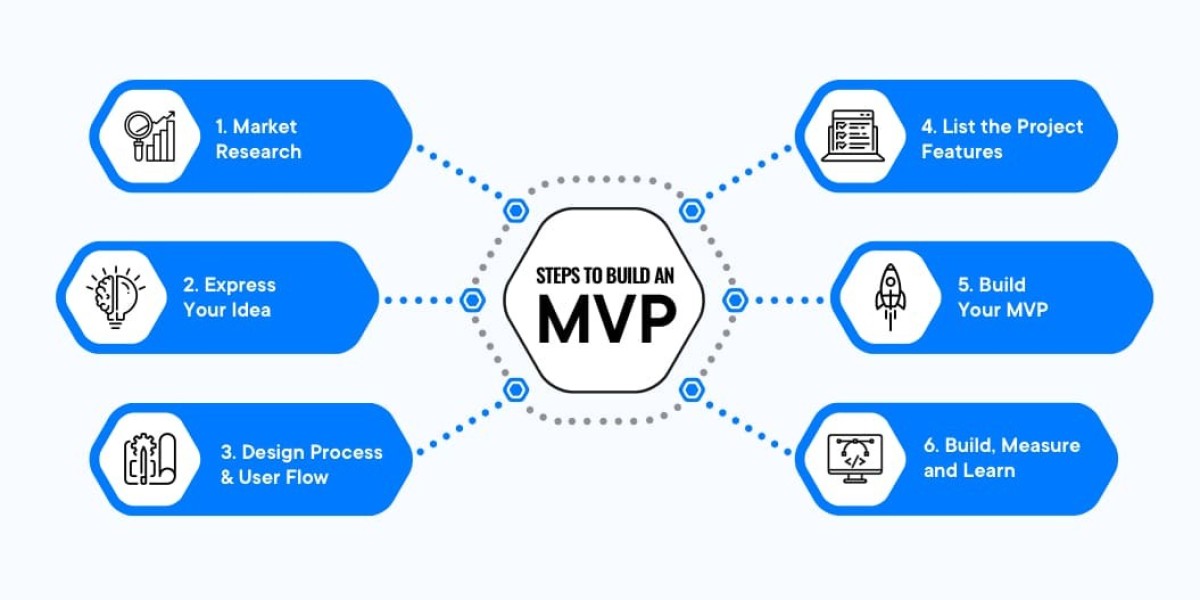The software development landscape is undergoing a rapid transformation, with a growing emphasis on speed, efficiency, and customer-centricity. This is where the Minimum Viable Product (MVP) shines. Did you know that 42% of startups fail due to a lack of market fit? MVP software development helps you mitigate this risk by validating your product idea early on and gathering crucial user feedback.
Understanding the MVP Concept
An MVP is the bare-bones version of your product, containing only the essential features to attract early adopters and gather valuable feedback. It's about testing your product idea in the market without breaking the bank. MVP development focuses on delivering value with minimal effort, allowing you to learn and adapt quickly.
Why Build an MVP?
- Validate Your Product Idea: An MVP helps you test your product concept in the real world and gather real-world feedback from potential users.
- Reduce Development Costs: By focusing on core features, you can significantly reduce development costs and time-to-market.
- Iterative Development: MVPs enable you to iterate on your product based on user feedback, ensuring it meets customer needs.
- Faster Time to Market: Launching an MVP allows you to enter the market quickly and gain a competitive advantage.
- Risk Mitigation: By investing less upfront, you reduce the financial risk associated with product development.
Steps to Building a Successful MVP
- Define Your Target Audience: Clearly understand your ideal customer to tailor your MVP accordingly. This will help you focus on features that deliver the most value to your target users.
- Identify Core Features: Determine the essential functionalities that solve your target audience's core problem. Prioritize these features to form the foundation of your MVP.
- Create a Minimal Design: Design a simple and user-friendly interface for your MVP. Focus on clarity and usability rather than complex aesthetics.
- Build a Basic Version: Develop the core functionalities of your product using the simplest technology stack possible. Prioritize speed to market over perfection.
- Test and Iterate: Launch your MVP to a limited audience and gather feedback. Use this feedback to identify areas for improvement and iterate on your product.
Overcoming Challenges in MVP Development
Building an MVP is not without challenges. Here are some common hurdles and how to overcome them:
- Setting the Right Scope: Determine the minimum set of features required without compromising the core value proposition. Involve potential users in the process to get their input.
- Balancing Speed and Quality: While speed is essential, don't compromise on quality. Prioritize features that directly impact the user experience and ensure they are built to a high standard.
- Gathering Meaningful Feedback: Design effective feedback mechanisms to collect valuable insights from users. Consider using surveys, interviews, and analytics to gather qualitative and quantitative data.
Key Metrics and Feedback Loops
Once your MVP is launched, it's crucial to measure its success and gather valuable feedback to inform future iterations. Here are some key metrics and strategies to track your MVP's performance:
- User Acquisition: Track the number of users who discover and sign up for your MVP. This metric helps you understand the effectiveness of your marketing efforts and overall product appeal.
- Activation: Measure the percentage of users who take specific actions within your MVP, such as completing a core feature or reaching a specific milestone. This indicates how well your product is engaging users.
- Retention: Track user retention rates to understand how many users continue to use your MVP over time. This metric is crucial for assessing product stickiness and identifying potential churn issues.
- Churn Rate: Calculate the percentage of users who stop using your MVP within a specific timeframe. A high churn rate indicates potential problems with your product or user experience.
- Customer Feedback: Gather feedback through surveys, user interviews, and product reviews. Analyze this feedback to identify areas for improvement and prioritize future features.
- A/B Testing: Experiment with different versions of your MVP to optimize key elements like user interface, messaging, and pricing.
Scaling Your MVP: From Minimum to Marketable
If your MVP proves successful, you'll need to scale your product and operations. Here are some key considerations:
- Expanding Features: Based on user feedback and market needs, identify additional features that can enhance your product's value proposition.
- Scaling Infrastructure: Ensure your technology stack can handle increased user load and data volume.
- Building a Team: Expand your team to support product development, customer support, and marketing efforts.
- Monetization Strategy: Develop a sustainable monetization strategy based on your product's value proposition and target market.
Conclusion
Building an MVP is a strategic approach to launching a successful SaaS product. By focusing on core features, gathering user feedback, and iterating rapidly, you can validate your product idea, reduce risks, and optimize resource allocation. Remember, an MVP is a starting point, not the end goal. By continuously measuring, learning, and adapting, you can transform your MVP into a fully-fledged, successful SaaS product that meets the needs of your target market.
The Agile methodology, combined with the MVP approach, provides a powerful framework for navigating the complex and competitive world of software development. Embrace the iterative process, listen to your users, and build a product that truly delivers value.



